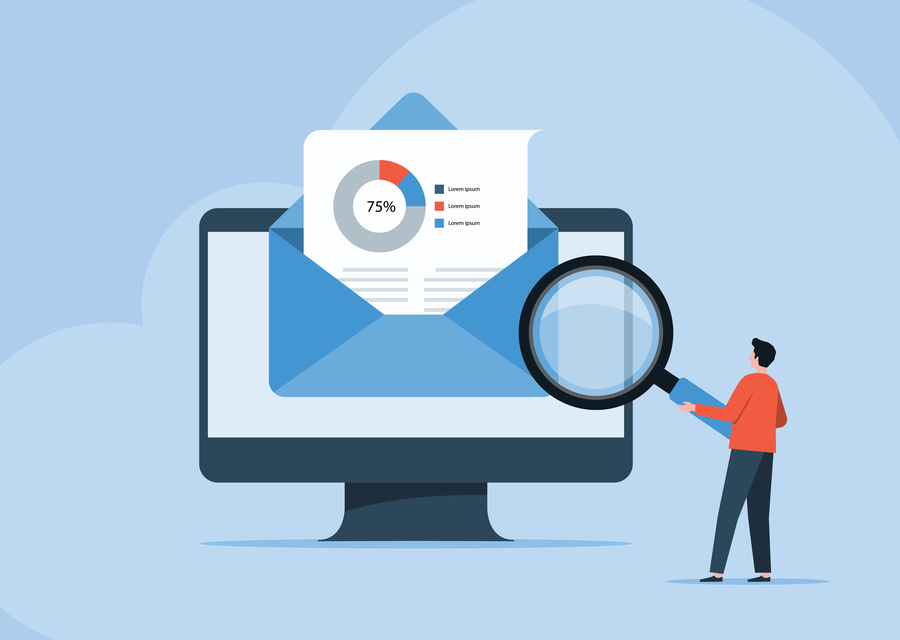Is Your Domain Getting the Cold Shoulder from Email Providers?
Is Your Domain Getting the Cold Shoulder from Email Providers?
Maybe It’s Time for a Domain Warmup.
Have a new domain? Maybe you’ve recently rebranded. Or maybe there’s been a merger or acquisition. Or maybe you’re sending emails from an account you haven’t used recently. Whatever the reason, if you don’t properly warm up your domain, you risk running into delivery problems that can seriously impact revenue.
You see, if you send an email from that new domain that has no sending reputation, it will likely be considered spam and blocked from hitting the mailboxes of your prospects and current customers. Bummer.
Gnashing of teeth and cries of, “That’s not fair,” won’t help. These email providers have a duty to protect their customers from spam. They don’t care that you say you’re legit, that you’ve been in business for decades, and that you are honest and trustworthy.
You have to prove it.
The only way to do that is to warm your domain, which develops your domain identity and establishes your sending reputation. This is what will get you the trust of email providers.
It’s yet another unavoidable hurdle to clear in the world of digital marketing. To succeed, it has to be done right, and we’re going to tell you how to do just that with some best practices that will turn groans into glee.
Do This First
We’ve all heard the quote about the best-laid plans of mice and men. To avoid your efforts going awry, click that mouse on a document or spreadsheet and start developing a plan for your warmup. Read on.
Your pre-warmup checklist
- Build a Sender Policy Framework record for the new Return-Path domain.
- Are you changing the DomainKeys Identified Mail (DKIM)? Then create a new DKIM domain and sign up that domain with the Yahoo feedback loop.
- If you used your old domain for the feedback loop and you deactivated that domain, make sure to update your IP-based complaint feedback loop email address.
- Now create your Domain-based Message Authentication, Reporting, and Conformance (DMARC) record and set the policy to monitor (p=none).
- Next, update your WHOIS record for your new domain with the correct information. Don’t use a domain privacy service.
- To allow incoming email, set up a mail exchange record for your new domain.
- Then create your abuse@ and postmaster@ accounts and add them to abuse.net
- Test your complaint feedback loops to make sure they are operating properly, and add anyone who has registered a complaint to your email suppression list.
- Check your bounce-handling process. Is it working properly? It may not be if the Return-Path domain has changed.
- Do you need to notify subscribers about your domain change? If they’ve whitelisted your old domain, encourage them to add your new sending address to that list.
You have your checklist, and you’re raring to go, but patience is a virtue, and good things come to those who wait. But enough hackneyed cliches. Let’s get cooking!
How to Warm Up Your Domain
Here’s the part you’ve been waiting for. But effectively warming up your domain, cliches aside, is an exercise in patience. Rome wasn’t built in a day, after all (sorry, couldn’t resist one more), and it will take time to establish your domain reputation.
Plan to spend at least four to eight weeks (that’s a month or two at minimum) warming up your new domain before giving the old one the axe. You’ll be sending your most popular content to an ever-growing portion of your most engaged subscribers.
Week 1
In the first week, send email to the top 1% of your subscribers from your new domain.
Week 2-8
Double the number of email recipients each week. During week 8, send your most popular content to every single one of your top subscribers. Once you know things are going well, you can start sending messages to the rest of your subscribers.
You can choose to warm up your new domain more slowly. You might want to use your old domain a bit longer before switching over entirely, or you might already be working on a high send volume.
You can also move more quickly if you send emails only a few times monthly or suffer from low engagement (if this is the case, we need to talk). Low send volumes or an incredibly engaging marketing campaign also mean you can speed things up, but even in those cases, you should take at least four weeks for your warmup.
Some best-practice tips
It does pay to be cautious. You can scuttle your whole effort by being impatient.
- Begin with a low sending volume. This means a maximum of 1,000 subscribers per mailbox provider per day from your new domain. You should be able to sort your list by providers, but if you can’t, begin with a total volume of 1,000 total subscribers.
- Be sure to target active subscribers. You want to start with your most engaged audience to start building trust.
Monitor Performance
Like everything else in digital marketing, warming up your new domain is as much an art as it is a science. If your results aren’t meeting your expectations, pause your warm-up efforts and troubleshoot any issues.
You can use a tracking system provided by your email provider or the free mail monitoring tool conveniently provided free with your HubSpot account.
After each send
Check your performance with opens and click-through metrics. That way, you can find any deliverability issues early in the warm-up process.
Is there a dip in engagement?
The next time you send emails from your new domain, target a small audience that has the highest engagement.
Look beyond overall performance
Examine performance at the ISP level, checking performance between them to make sure that one client (such as Gmail) doesn’t have concerns that affect deliverability.
- If you suspect a problem with a certain ISP, remove addresses for that ISP for the next send.
- Then find the most active subscribers who use that ISP. Try sending an email just to them, and then ramp up your volume slowly until you reach the engagement levels you expect.
Opt-outs? Who cares?
Hey, opt-outs happen, and a few of them aren’t going to impact your deliverability during your warm-up, particularly if you have high positive engagement otherwise.
Don’t stop monitoring after your warm-up
You already know this, but you should always monitor email engagement and your sender reputation. The first year of your new domain is the most important for establishing deliverability, but you can easily lose your good reputation, so look sharp.
If engagement drops, stop sending
This is why you warm up slowly and keep your old domain for a month or more. If your new domain is hurting engagement, you can stop sending from the new domain and keep using the old one so you can continue email marketing. That gives you the time and space to investigate what’s going on.
Again, don’t be in a rush
A big spike in email volume as you’re warming up your domain is going to ruin all of your efforts. So don’t get all excited and triple your send volume instead of doubling it each week. If you just can’t help yourself, at least divide the list into smaller daily sends.
Ugh. Spam filters
Is something getting in the way of your emails? Checking for spam filters is just as important as monitoring performance. Use a tool such as Litmus, UnSpam, or Kickbox.
Domain Warm-Up is A Vital Part of Email Deliverability
This is serious stuff, folks. It’s likely your email marketing is the lifeblood of your marketing. That means you don’t want to hack off the powers that be.
All internet service providers use a set of complex algorithms that include your IP, domain, and overall email engagement. Your new domain is seen as a newcomer. Don’t be offended, but that even includes your established brand.
Spammers ruin things for all of us, changing domains often, and that makes ISPs skeptical. The only road to high deliverability is to move slowly and keep an eagle eye on engagement, delivery, and spam filters.
Table of contents
Share this
You May Also Like
These Related Stories

The Tactical Guide to Domain Warm-Up in HubSpot

Domain Authority – Simply Put In Less Than 100 Words
